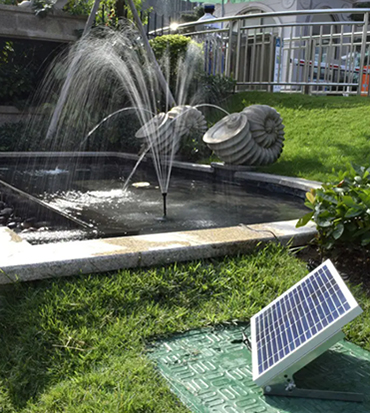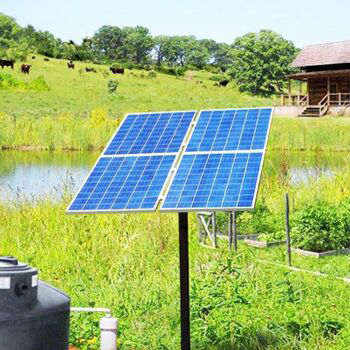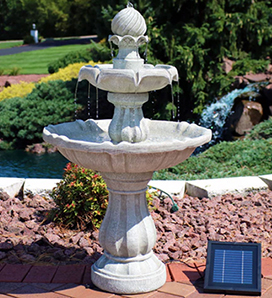When looking for a solar powered pump, there are several points to consider before investing so you’re not disappointed with your purchase. Things you’ll need to ask yourself are below:

Is it powerful enough?
The first question you should ask is if the pump is powerful enough for its intended purpose. If you have a 2000 gallon pond, for example, a 200 GPH solar pump will not be sufficient as a main pond pump. If you want to add a small 3ft fountain to your 300 gallon pond, however, a solar powered fountain pump may be the perfect solution.
In general, most solar powered pumps are designed for ponds of a maximum size of 1000 gallons, but can also be used in larger ponds as a complementary feature so long as they’re placed on a shallow shelf.
Do I get enough sunlight?
Without sunlight, solar pumps just won’t work. You’ll need to make sure you can set the solar pv panels in an area which catches a good amount of daily sun for maximum benefits. On overcast days, if your pump has a battery included, you can also let the batteries keep the pump running while you wait for the sun to return.

Solar panel and battery quality?
Solar panels need to be manufactured to a high quality standard, and the larger the panel’s size, the more power will be produced.
For your solar pump to keep running at night and on overcast days, you’ll also need a solar battery with adequate charge. From experience, after a full day of sunlight, a good battery should provide around 3-5 hours of further use before the charge is depleted. If the pump kit doesn’t come with a battery pack included, you can purchase one separately and attach to the solar panels fairly easily.
Ways to increase the efficiency of a solar pond pump:

There are a few ways to increase the efficiency of a solar powered water pump so you can get maximum benefits. Some of these are:
- Placing solar panels to catch the strongest sun (11am-3pm)
- Cleaning solar panels regularly
- Cleaning solar pump regularly
- Decreasing fountain height
- Improving water quality (less pump work)